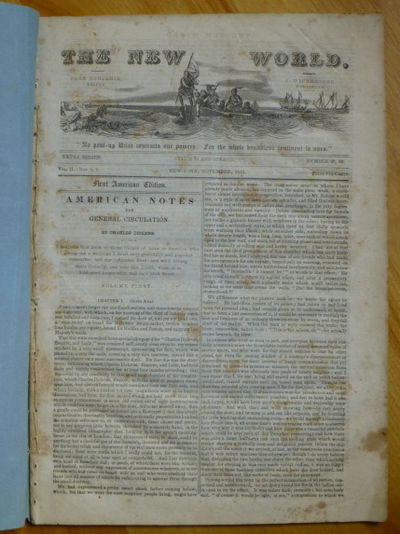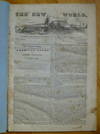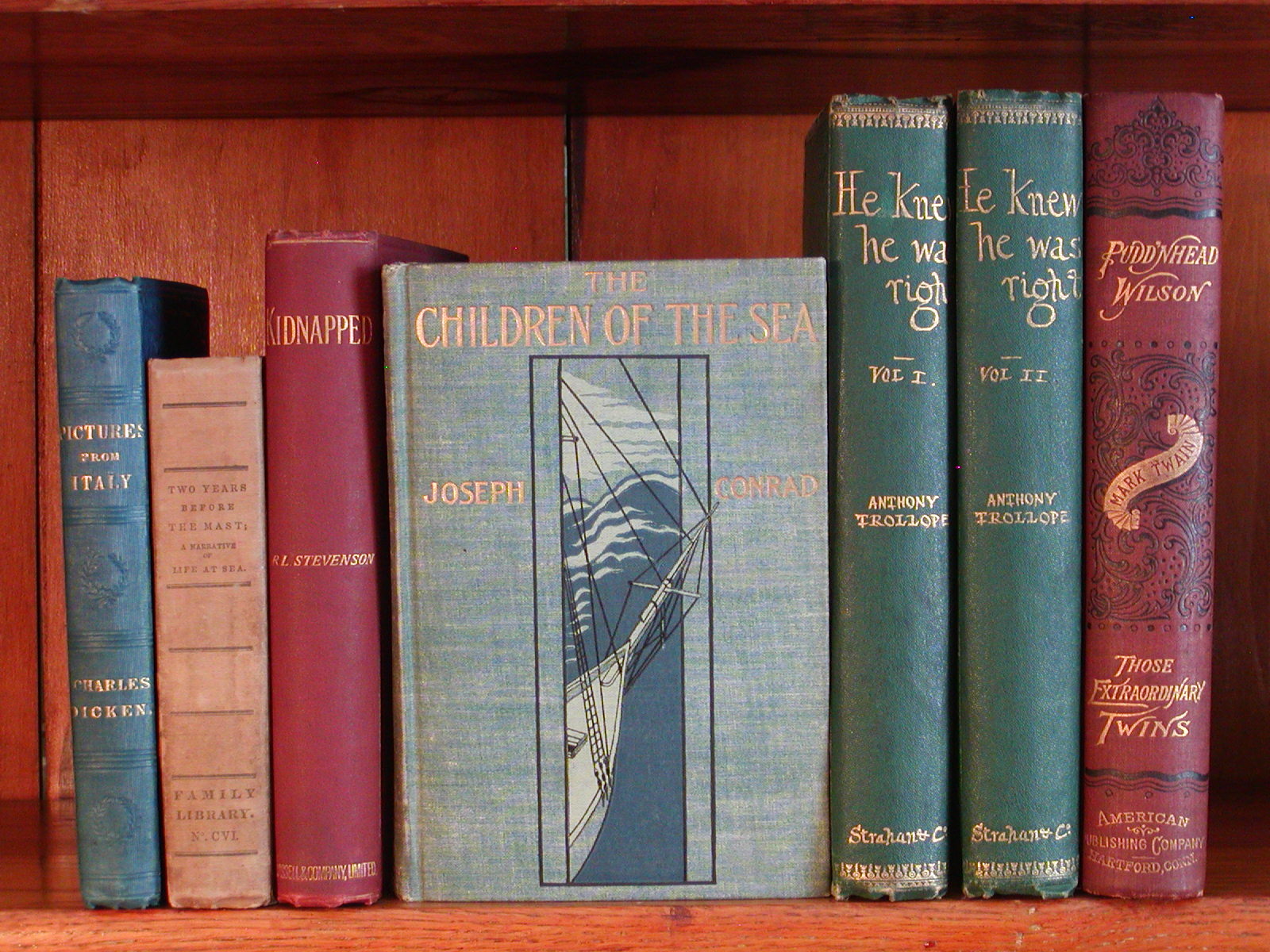first edition
1842
by Dickens, Charles
1842. First American Edition. New-York: J. Winchester, Publisher, November 1842. Original self-wrappers, bound into very early plain blue wrappers.
"First American Edition" -- second impression. As first put forth in a 1975 article by Peter Bracher and now confirmed in Walter Smith's bibliography, this edition (12-1/2 cents) was published at 2:00 PM on Monday, November 7, 1842 -- just TWO HOURS before the "Brother Jonathan Extra" edition (12-1/2 cents) managed to get out on the streets. Harper got its edition (12-1/2 cents) out by early or mid-afternoon on the following day (Tuesday the 8th), and Lea & Blanchard of Philadelphia had an edition (truncated)
"First American Edition" -- second impression. As first put forth in a 1975 article by Peter Bracher and now confirmed in Walter Smith's bibliography, this edition (12-1/2 cents) was published at 2:00 PM on Monday, November 7, 1842 -- just TWO HOURS before the "Brother Jonathan Extra" edition (12-1/2 cents) managed to get out on the streets. Harper got its edition (12-1/2 cents) out by early or mid-afternoon on the following day (Tuesday the 8th), and Lea & Blanchard of Philadelphia had an edition (truncated)






